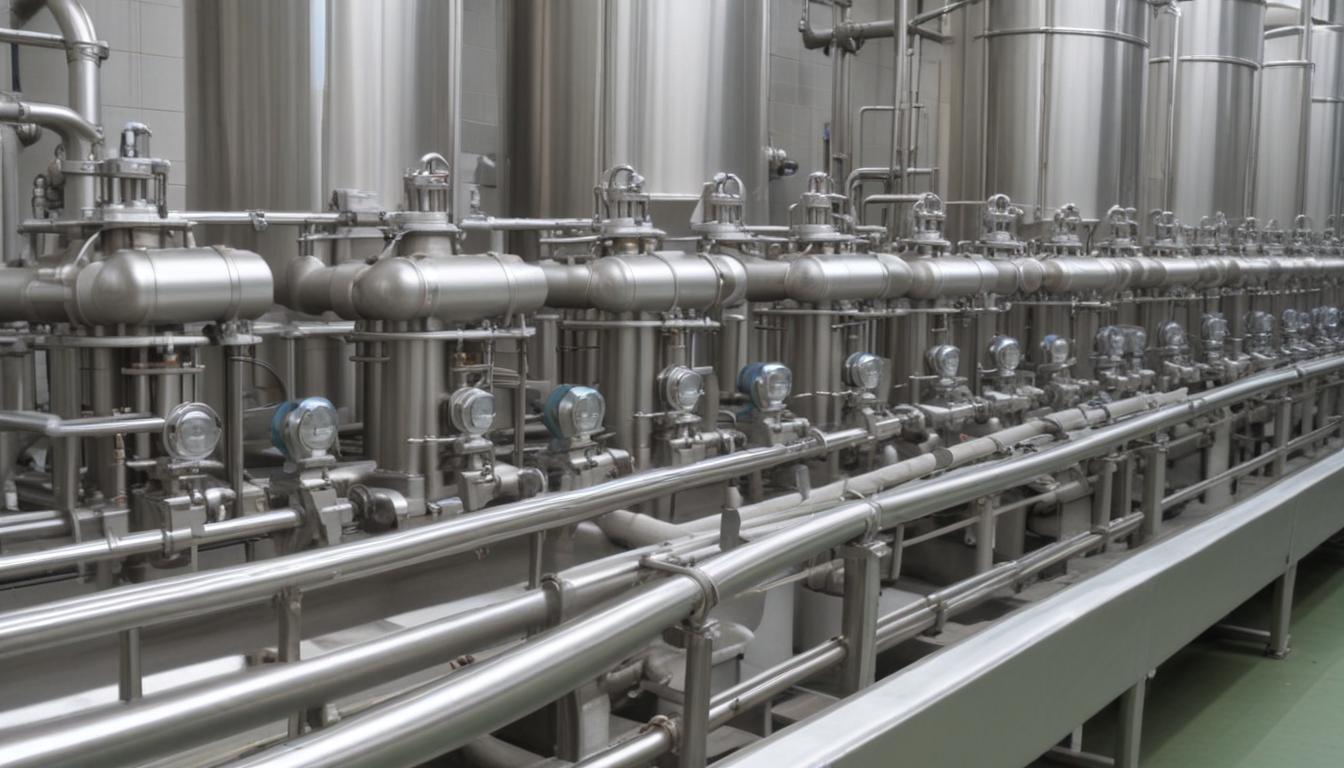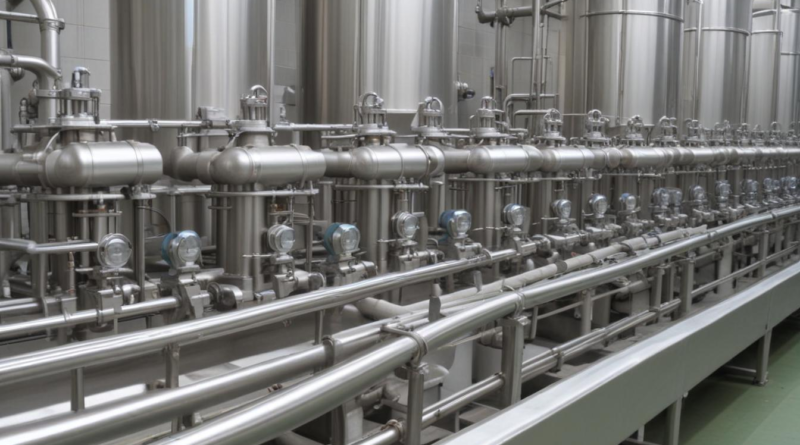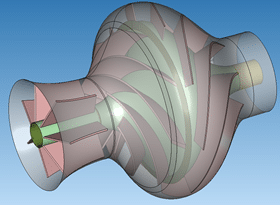pumps used in the food preservation industry
In the food preservation industry, selecting the appropriate pump type is crucial to ensure efficiency, maintain product integrity, and comply with safety standards. The primary categories of food preservation pumps include centrifugal pumps, positive displacement pumps, peristaltic pumps, and diaphragm pumps. Each type offers distinct advantages tailored to specific applications within the industry.
- Centrifugal Pumps: These are widely used due to their ability to handle large volumes of liquid with relatively low viscosity. They operate by converting rotational kinetic energy to hydrodynamic energy, making them ideal for applications such as transferring juices, dairy products, and sauces.
- Positive Displacement Pumps: Known for their precision in metering and handling high-viscosity fluids, these pumps are essential in applications requiring accurate flow rates. Subtypes include:
- Gear Pumps: Suitable for thick and sticky products like pastes and purees.
- Diaphragm Pumps: Ideal for hygienic applications as they prevent product contamination.
- Peristaltic Pumps: Excellent for gentle pumping of shear-sensitive products, such as certain dairy and liquid egg products.
- Peristaltic Pumps: These pumps are favored for their ability to handle sterile and clean applications without contaminating the product, making them ideal for pharmaceutical-grade food preservation processes.
- Diaphragm Pumps: Offering precise control over flow rates and excellent sealing properties, diaphragm pumps are used in applications requiring high levels of sanitation and precision, such as in the packaging of perishable goods.
| Pump Type | Key Features | Typical Applications |
|---|---|---|
| Centrifugal Pumps | High flow rates, low viscosity handling | Juice transfer, dairy processing, sauce handling |
| Gear Pumps | Handles high viscosity, precise dosing | Paste and puree processing |
| Peristaltic Pumps | Gentle pumping, contamination-free | Pharmaceutical-grade liquid handling, shear-sensitive products |
| Diaphragm Pumps | High sanitation, precise flow control | Packaging of perishable goods, precise ingredient mixing |
Understanding the various types of pumps and their specific functionalities allows food preservation facilities to optimize their processes, ensuring product quality and operational efficiency. Selecting the right pump type aligns with the desired applications, ultimately contributing to effective food preservation strategies.
applications in food preservation
Food preservation pumps play a vital role in various stages of the preservation process, ensuring that products maintain their quality, safety, and longevity. Their diverse applications encompass multiple facets of food processing and packaging, each requiring specific pump types to meet stringent industry standards.
- Liquid Transfer and Handling: Efficient movement of liquids such as juices, milk, and sauces between different stages of processing is essential. Centrifugal pumps are typically employed here due to their high flow rates and ability to handle low-viscosity fluids effectively.
- Blending and Mixing: Uniform mixing of ingredients is crucial for consistent product quality. Positive displacement pumps, including diaphragm and peristaltic pumps, are preferred for their precise flow control, ensuring accurate ingredient proportions during blending.
- High Viscosity Product Pumping: Products like purees, pastes, and thick sauces require pumps that can handle high viscosity without compromising flow efficiency. Gear pumps and other positive displacement types are ideal for these applications, providing consistent and reliable pumping performance.
- Sterile and Hygienic Applications: Maintaining sterility is paramount in certain food preservation processes, especially in pharmaceutical-grade food products. Peristaltic pumps are favored in these settings as they prevent product contamination by ensuring no direct contact between the pump mechanism and the product.
- Packaging and Filling: Accurate and sanitary filling of containers with perishable goods demands pumps that offer precise flow rates and easy cleaning. Diaphragm pumps are often used in packaging lines to achieve the necessary precision and maintain high sanitation standards.
- Sanitation and Cleaning Processes: Effective cleaning of equipment and pipelines is critical to prevent contamination and ensure product safety. Centrifugal and diaphragm pumps are commonly utilized in cleaning-in-place (CIP) systems due to their ability to handle cleaning agents and high-pressure requirements.
| Application | Suitable Pump Type | Key Advantages |
|---|---|---|
| Liquid Transfer and Handling | Centrifugal Pumps | High flow rates, efficient for low-viscosity liquids |
| Blending and Mixing | Diaphragm Pumps, Peristaltic Pumps | Precise flow control, accurate ingredient proportions |
| High Viscosity Product Pumping | Gear Pumps | Handles thick liquids, consistent pumping performance |
| Sterile and Hygienic Applications | Peristaltic Pumps | Prevents contamination, suitable for pharmaceutical-grade products |
| Packaging and Filling | Diaphragm Pumps | Precise flow rates, easy cleaning for high sanitation |
| Sanitation and Cleaning Processes | Centrifugal Pumps, Diaphragm Pumps | Handles cleaning agents, high-pressure capabilities |
By leveraging the appropriate types of pumps for each specific application, the food preservation industry can enhance operational efficiency, ensure product consistency, and maintain the highest standards of hygiene and safety. This strategic alignment of pump technology with application requirements is fundamental to successful food preservation and packaging operations.
maintenance and cleaning
Regular maintenance and thorough cleaning are essential to ensure the optimal performance and longevity of food preservation pumps. Implementing a structured maintenance program not only enhances operational efficiency but also upholds stringent hygiene standards critical in the food industry.
- Scheduled Inspections: Conduct routine evaluations of pump components to identify signs of wear, corrosion, or damage. Regular inspections help in early detection of potential issues, minimizing the risk of unexpected downtimes.
- Cleaning-in-Place (CIP) Systems: Utilize CIP systems to streamline the cleaning process without disassembling the pump. This method ensures thorough sanitation, reducing the likelihood of cross-contamination between batches.
- Disassembly and Manual Cleaning: For pumps that cannot be fully sanitized using CIP, manual disassembly and cleaning of critical parts are necessary. This includes scrubbing surfaces, replacing worn seals, and ensuring all contact points are free from residues.
- Lubrication of Moving Parts: Regularly lubricate bearings, seals, and other moving components to reduce friction and prevent premature wear. Using appropriate food-grade lubricants is crucial to maintain product safety.
- Monitoring and Documentation: Keep detailed records of all maintenance activities, inspections, and cleaning procedures. Documentation is vital for regulatory compliance and for tracking the performance and reliability of pump systems over time.
| Maintenance Task | Frequency | Key Considerations |
|---|---|---|
| Visual Inspections | Daily | Check for leaks, unusual noises, and overall pump condition. |
| Seal and Gasket Replacement | Quarterly | Inspect for signs of wear and replace to prevent contamination. |
| Complete Cleaning | Monthly | Use CIP systems or manual cleaning methods to sanitize all pump surfaces. |
| Lubrication | Weekly | Apply food-grade lubricants to moving parts to ensure smooth operation. |
| Performance Testing | Biannually | Evaluate pump efficiency and flow rates to ensure they meet operational standards. |
Implementing these maintenance and cleaning practices helps maintain the integrity of food preservation pumps, ensuring they operate efficiently and safely. Adhering to a rigorous maintenance schedule not only extends the service life of the pumps but also safeguards the quality and safety of the food products being preserved.
regulatory compliance
 Ensuring compliance with regulatory standards is paramount in the food preservation industry to maintain product safety, quality, and consumer trust. Adhering to these regulations mitigates risks associated with contamination, ensures consistency in production processes, and facilitates market access both domestically and internationally. The following outlines key regulatory frameworks and best practices relevant to food preservation pumps.
Ensuring compliance with regulatory standards is paramount in the food preservation industry to maintain product safety, quality, and consumer trust. Adhering to these regulations mitigates risks associated with contamination, ensures consistency in production processes, and facilitates market access both domestically and internationally. The following outlines key regulatory frameworks and best practices relevant to food preservation pumps.
- Food and Drug Administration (FDA) Regulations: The FDA sets stringent guidelines under the Food Safety Modernization Act (FSMA) that impact the design, installation, and operation of pumps in food processing facilities. Key aspects include:
- Good Manufacturing Practices (GMP): Ensures that equipment is properly maintained, cleaned, and sanitized to prevent contamination.
- Hazard Analysis and Critical Control Points (HACCP): Requires identification and control of potential hazards in the food production process, including those related to pumping systems.
- United States Department of Agriculture (USDA) Standards: For products under USDA jurisdiction, such as meat and poultry, compliance with specific sanitation and processing standards is mandatory. This includes:
- Sanitation Requirements: Ensuring that all pump materials are non-toxic, corrosion-resistant, and easy to clean.
- Process Control: Maintaining precise control over temperature, flow rates, and other parameters critical to product safety.
- National Sanitation Foundation (NSF)/American National Standards Institute (ANSI) Standards: These standards provide guidelines for the design and construction of food equipment to ensure sanitary conditions. Relevant standards include:
- NSF/ANSI 61: Pertains to the safety of materials that come into contact with food.
- NSF/ANSI 3: Covers the design and construction of pumps used in food processing to prevent contamination.
- International Organization for Standardization (ISO) Standards: For companies operating globally, ISO standards such as ISO 22000 for food safety management systems are crucial. Compliance involves:
- Risk Management: Implementing comprehensive risk assessments for all equipment, including pumps.
- Documentation and Traceability: Maintaining detailed records of pump maintenance, cleaning, and performance to ensure traceability in case of issues.
| Regulatory Body | Relevant Standards | Key Compliance Requirements |
|---|---|---|
| FDA | FSMA, GMP, HACCP | Proper maintenance, sanitation, hazard control |
| USDA | Sanitation Standards, Process Control | Non-toxic materials, precise parameter control |
| NSF/ANSI | NSF/ANSI 61, NSF/ANSI 3 | Safe materials, contamination prevention design |
| ISO | ISO 22000 | Risk management, documentation, traceability |
Implementing these regulatory standards involves a combination of proper equipment selection, regular maintenance, thorough cleaning protocols, and comprehensive documentation practices. Specifically, the following best practices are essential:
- Material Compliance: Ensure that all pump components are made from materials approved for food contact, such as stainless steel or food-grade plastics, to prevent contamination and corrosion.
- Design for Cleanability: Select pump designs that facilitate easy disassembly and cleaning, reducing the risk of harboring bacteria or residues.
- Regular Audits and Inspections: Conduct periodic audits to verify compliance with regulatory standards, identify potential non-conformities, and implement corrective actions promptly.
- Employee Training: Train staff on regulatory requirements, proper pump operation, and cleaning procedures to ensure consistent adherence to standards.
- Documentation and Record-Keeping: Maintain detailed logs of maintenance activities, cleaning schedules, and compliance checks to provide evidence of adherence during inspections and audits.
Adhering to regulatory compliance not only ensures the safety and quality of food products but also enhances the reputation of food preservation facilities. By integrating these standards into daily operations, companies can achieve operational excellence and maintain competitive advantage in the food industry.
future trends
The landscape of pump technology in the food preservation industry is rapidly evolving, driven by advancements in technology and increasing demands for efficiency, sustainability, and regulatory compliance. Emerging trends are shaping the future of food preservation pumps, enhancing their performance and integration within modern processing facilities.
- Smart and IoT-Enabled Pumps: Integration of Internet of Things (IoT) technology allows pumps to communicate in real-time with centralized control systems. This connectivity facilitates remote monitoring, real-time data acquisition, and enhanced control over pump operations. Smart pumps can automatically adjust flow rates based on real-time demand, optimizing performance and reducing waste.
- Energy Efficiency: As sustainability becomes a priority, there is a significant push towards energy-efficient pump designs. Advances in motor technology, such as variable frequency drives (VFDs), enable pumps to operate more efficiently by matching energy consumption with the actual demand. Additionally, lightweight materials and streamlined designs contribute to reducing the overall energy footprint of pump systems.
- Advanced Materials: The development of new materials enhances the durability and sanitation of food preservation pumps. High-grade stainless steels and specialized food-grade plastics offer improved resistance to corrosion and wear, extending the lifespan of pumps. These materials also facilitate easier cleaning and maintenance, ensuring compliance with stringent hygiene standards.
- Automation and Enhanced Control Systems: Advanced control systems incorporate automation to improve precision and consistency in pump operations. Automated systems can manage complex pumping tasks, such as blending and dosing, with higher accuracy. Enhanced sensors and feedback mechanisms provide detailed insights into pump performance, enabling fine-tuned control and optimization of processes.
- Integration with Industry 4.0: The adoption of Industry 4.0 principles enables seamless integration of pumps into smart manufacturing ecosystems. Data analytics and machine learning algorithms analyze operational data to predict maintenance needs, optimize performance, and prevent downtime. This integration supports a more connected and responsive production environment.
- Sustainability and Eco-Friendly Designs: Sustainability initiatives are driving the design of pumps that minimize environmental impact. This includes the use of recyclable materials, reduction of hazardous chemicals in manufacturing, and designs that support circular economy practices. Eco-friendly pump systems contribute to the overall sustainability goals of food preservation facilities.
- Modular and Flexible Pump Systems: The demand for flexibility in processing operations has led to the development of modular pump systems. These systems can be easily reconfigured or expanded to accommodate changes in production requirements. Modular designs enhance scalability and reduce the time and cost associated with system upgrades and modifications.
- Predictive Maintenance with AI and Machine Learning: Incorporating artificial intelligence (AI) and machine learning into maintenance protocols enables predictive maintenance strategies. By analyzing historical and real-time data, these technologies can predict potential pump failures before they occur, allowing for timely interventions and minimizing unplanned downtime.
| Trend | Description | Benefits |
|---|---|---|
| Smart and IoT-Enabled Pumps | Integration of IoT for real-time monitoring and control. | Improved efficiency, remote management, reduced downtime. |
| Energy Efficiency | Adoption of energy-saving technologies and designs. | Lower energy costs, reduced environmental impact. |
| Advanced Materials | Use of high-grade stainless steels and food-grade plastics. | Enhanced durability, easier cleaning, better sanitation. |
| Automation and Enhanced Control Systems | Implementation of automated systems for precise control. | Increased accuracy, optimized performance, labor savings. |
| Integration with Industry 4.0 | Seamless integration into smart manufacturing ecosystems. | Data-driven decision making, improved responsiveness. |
| Sustainability and Eco-Friendly Designs | Focus on recyclable materials and minimal environmental impact. | Supports sustainability goals, enhances corporate responsibility. |
| Modular and Flexible Pump Systems | Designs that allow easy reconfiguration and scalability. | Adaptable to changing needs, cost-effective upgrades. |
| Predictive Maintenance with AI and Machine Learning | Using AI to predict and prevent pump failures. | Minimized downtime, extended pump lifespan, proactive maintenance. |
As the food preservation industry continues to advance, the adoption of these future trends will be instrumental in enhancing the performance, reliability, and sustainability of pump systems. Embracing these innovations ensures that food preservation pumps remain at the forefront of technology, supporting the industry’s evolving needs and maintaining the highest standards of product quality and safety.




